Fermentation is a natural process that has been used for centuries to preserve food and enhance its flavor. Fermented foods are created when natural bacteria, yeasts, and fungi convert carbohydrates into alcohol, acids, and gases. The end result is a food that is rich in beneficial bacteria known as probiotics, which can improve gut health, boost the immune system, and reduce inflammation.
In recent years, fermented foods have gained popularity as people have become more aware of the health benefits of probiotics. If you want to include fermented foods in your diet, then keep these tips in mind.
How much fermented food is too much?
It is generally recommended that you start slowly when introducing fermented foods into your diet. This is because consuming too much too quickly can lead to digestive discomfort such as bloating, gas, and diarrhea. It is best to start with small amounts, such as a tablespoon of fermented vegetables or a half cup of yogurt, and gradually increase the amount as your body adapts.
It is also important to keep in mind that fermented foods should not be the only source of probiotics in your diet. Other sources of probiotics include supplements and probiotic-rich foods such as kefir, kombucha, and kimchi.
How to Integrate Them in Your Diet
Integrating fermented foods into your diet can be a simple and enjoyable process. Here are some tips to help you get started:
- Start Slow: If you are new to fermented foods, it is best to start slowly and gradually increase your intake over time. This will allow your body to adjust to the new foods and prevent any digestive discomfort that may occur from suddenly increasing your intake of probiotics.
- Vary the Types of Fermented Foods: There are many different types of fermented foods to choose from, so it is important to vary the types that you eat. This will help to ensure that you are getting a wide range of probiotic strains and nutrients. Some examples of fermented foods include yogurt, kefir, sauerkraut, kimchi, miso, tempeh, and kombucha.
- Make Your Own Fermented Foods: Making your own fermented foods can be a fun and rewarding process. It can also ensure that you are getting the most probiotics possible, as store-bought versions may be pasteurized or contain added sugars and preservatives. Some simple fermented foods that you can make at home include yogurt, kefir, sauerkraut, and pickles.
- Incorporate them in Your Meals: You can add fermented foods to different meals and snacks. For example, you can add sauerkraut to a sandwich or salad, top your oatmeal with yogurt or kefir, or enjoy a glass of kombucha with your lunch. Be creative and experiment with different combinations to find what works best for you.
- Consider a Probiotic Supplement: If you are unable to incorporate enough fermented foods into your diet, or if you have specific health concerns that require a higher intake of probiotics, you may want to consider taking a probiotic supplement. Be sure to speak with your healthcare provider before starting any new supplements.
Fermented foods at home
One of the easiest ways to incorporate fermented foods into your diet is to make them at home. Fermenting food at home is a simple and affordable way to ensure that you are getting the maximum benefits from the probiotics in your food. Some popular fermented foods that you can easily prepare at home are:
- Yogurt: Yoghurt is also a popular fermented food that you can easily prepare at home. All you need is milk and yoghurt culture, which you can purchase at most health food stores.
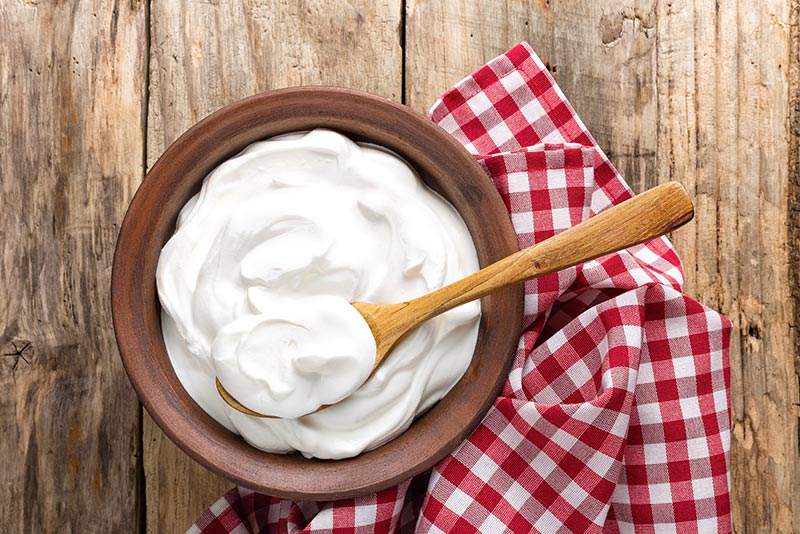
- Kombucha: Kombucha is a fermented tea that you can prepare by adding a SCOBY (symbiotic culture of bacteria and yeast) to sweetened tea. The SCOBY ferments the tea, creating a tangy and slightly effervescent beverage.
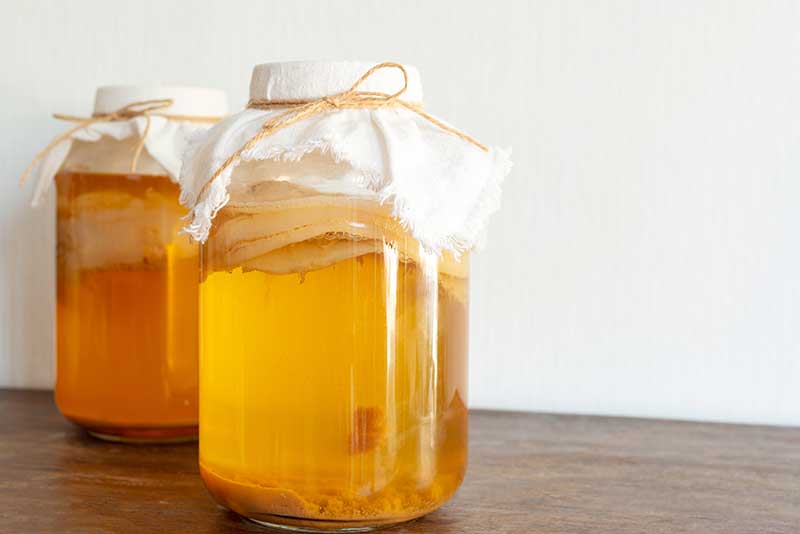
- Kimchi: Kimchi is a spicy Korean side dish that you can prepare by fermenting vegetables such as cabbage, radish, and cucumber with spices and seasonings. You can also eat it on its own or use it as a side dish with your meals.
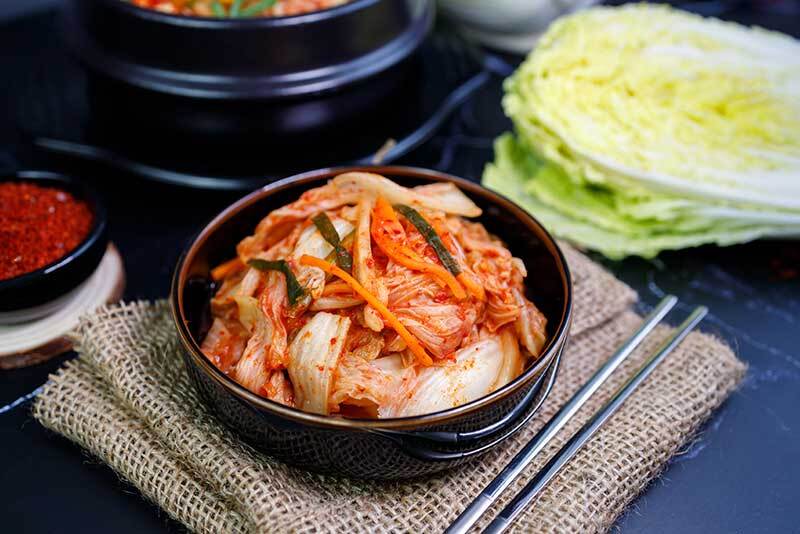
- Sauerkraut: Sauerkraut is a traditional German dish that you can prepare by fermenting cabbage with salt. The cabbage is left to ferment for several weeks, during which time the natural bacteria convert the sugars in the cabbage into lactic acid, giving the sauerkraut its distinctive tangy flavor.
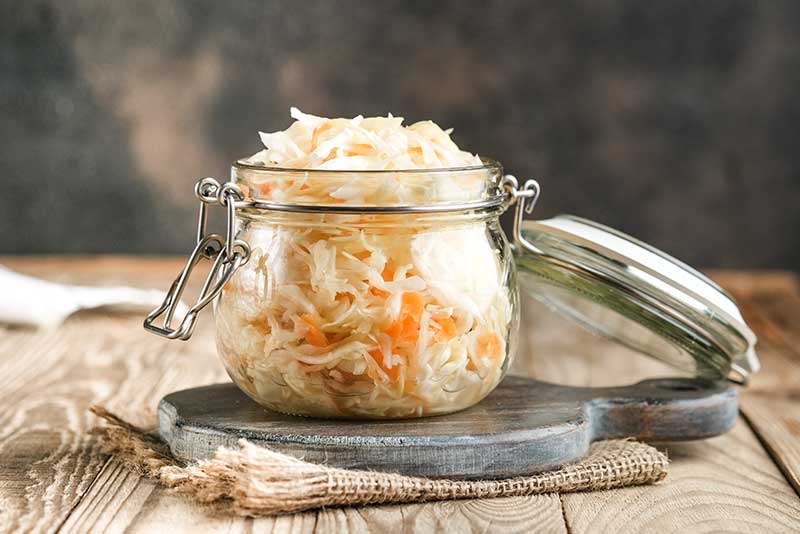
How much fermented food should I eat?
The amount of fermented food that you should eat depends on your individual needs and preferences. As mentioned earlier, it is best to start with small amounts and gradually increase the amount as your body adapts. It is also important to vary the types of fermented foods that you eat in order to get a variety of probiotics.
Fermented foods examples
Here are some examples of fermented foods that you can add to your diet:
- Idli: Idli is a popular Indian breakfast food that one can prepare by fermenting a batter of rice and urad dal. Then you have to let the batter ferment overnight, which results in a fluffy and spongy texture.

- Dosa: Dosa is another popular Indian dish that one can prepare with fermented rice and lentil batter. The batter is spread thinly on a hot griddle and cooked until crispy.
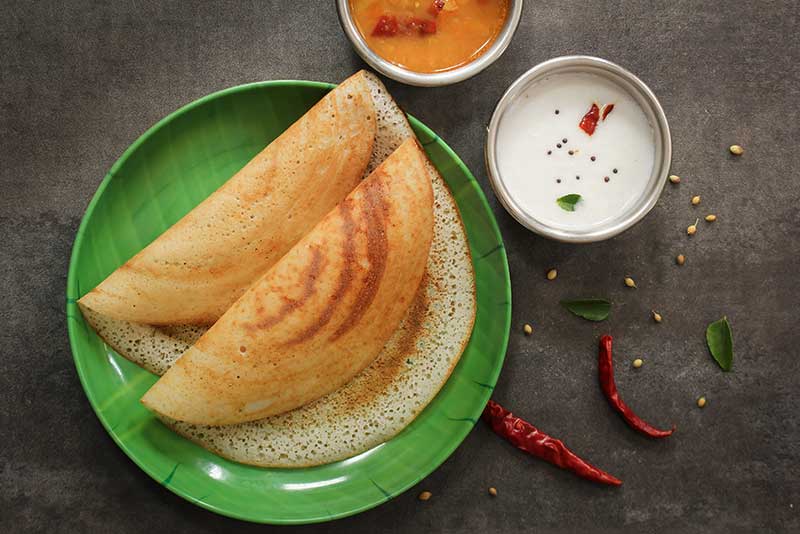
- Chachh: Chachh, also known as buttermilk, is a fermented dairy beverage that is popular in India. You can prepare it by adding yoghurt or curd to the water and whisking it until it is smooth.
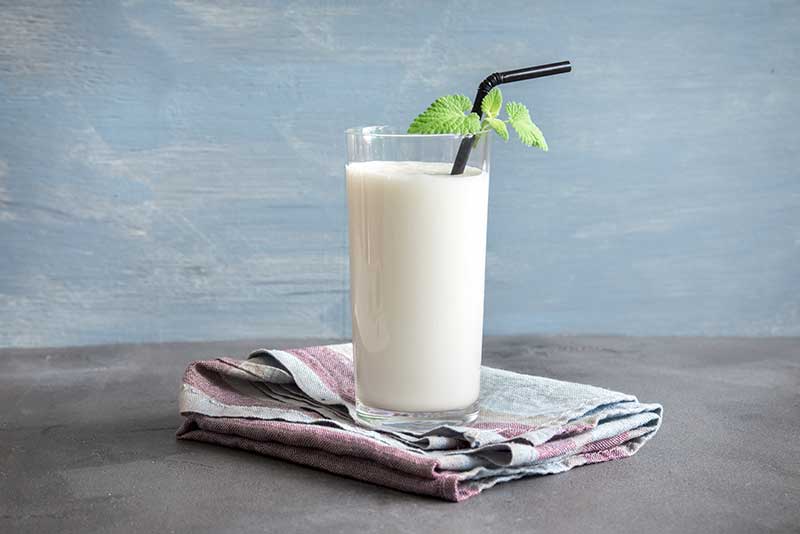
- Curd: Curd, is a fermented dairy product that is rich in probiotics. One can prepare it by adding live culture to milk and allowing it to ferment for several hours.

- Pickles: Pickles are cucumbers that have been fermented in brine, vinegar, or a mixture of both. The fermentation process gives pickles their tangy and slightly sour taste.
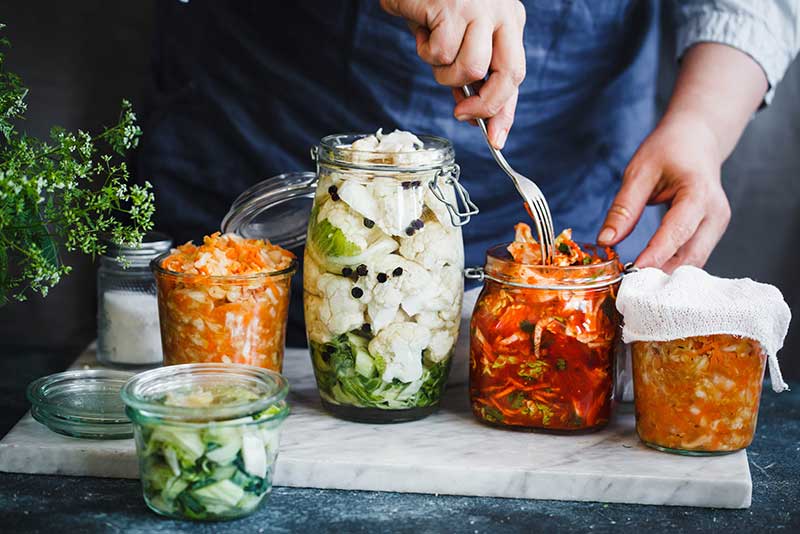
- Dhokla: Dhokla is a popular Indian snack that you can prepare with a fermented batter of chickpea flour and spices. Then all you have to do is steam the batter and serve it with chutney.
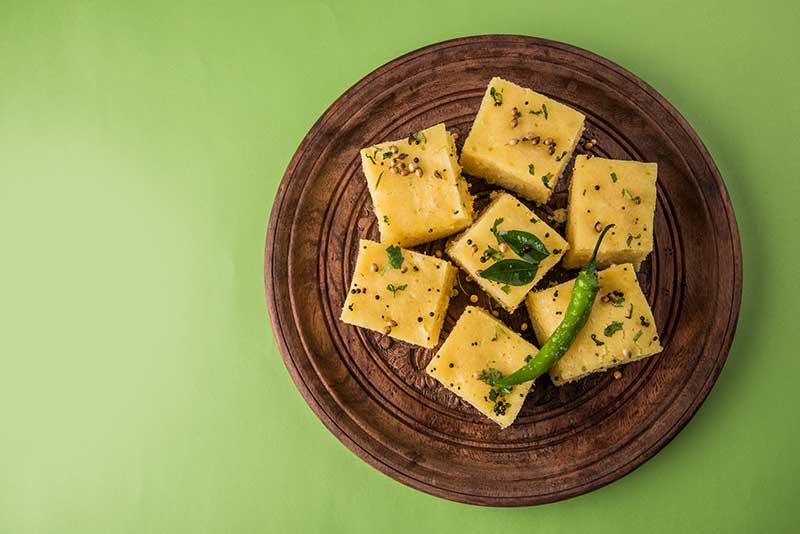
- Appam: Appam is a type of pancake that is popular in South India and Sri Lanka. One can prepare it with fermented rice batter and coconut milk, which results in a soft and fluffy texture.

Takeaway
Fermented foods can be a delicious and healthy addition to your diet. They are rich in probiotics, which can improve gut health, boost the immune system, and reduce inflammation. To incorporate fermented foods into your diet, start slowly, vary the types of fermented foods that you eat, and consider making your own at home. By doing so, you can reap the many health benefits that fermented foods have to offer.
References: https://pubmed.ncbi.nlm.nih.gov/28945458/
https://www.ncbi.nlm.nih.gov/pmc/articles/PMC9003261/

Priyanka Khurana Goyal is a prominent Indian figure renowned for her diverse accomplishments and contributions across various fields.. Read more


